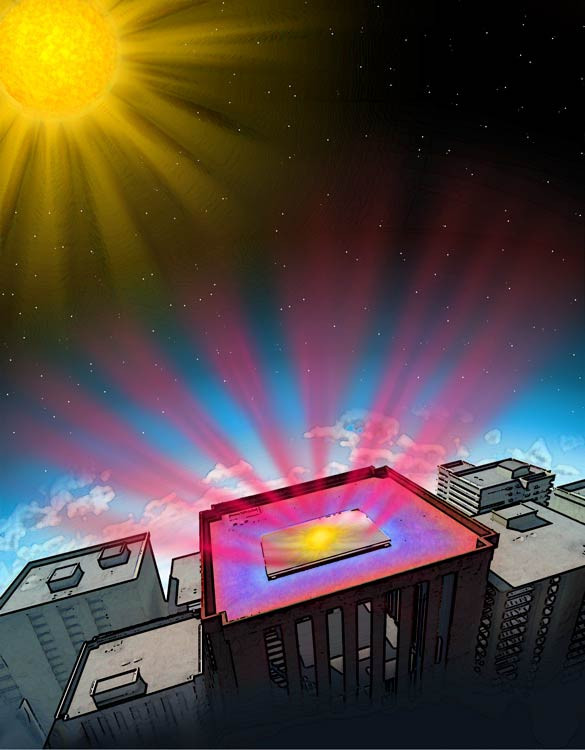Buildings can be cooled by 5C using new material developed at Stanford

An ultrathin, multilayered material developed by Stanford engineers can help cool buildings by as much as 5C without using electricity.
The material simply radiates heat away from the building, while reflecting light back into space.
In addition to shunting away infrared heat waves, the material also acts like a mirror and prevents 97% of sunlight from heating the building.
The ultra-thin coating was made to send the infrared light away from buildings at the precise frequency that allows it to pass through the atmosphere without warming the air and adding to global warming.
Together, the radiation and reflection make the photonic radiative cooler nearly 5C (9F) cooler than the surrounding air during the day.
The team led by electrical engineering professor Shanhui Fan and research associate Aaswath Raman reported the energy-saving breakthrough in a journal titled Nature.
The photonic radiative cooling has been designed to be cost-effective for large-scale deployment on building rooftops.
"This team has shown how to passively cool structures by simply radiating heat into the cold darkness of space," said Nobel Prize winning physicist Burton Richter, professor emeritus at Stanford.

A warming world needs cooling technologies that don't require power, according to Aaswath Raman, lead author of the journal.
"Across the developing world, photonic radiative cooling makes off-grid cooling a possibility in rural regions, in addition to meeting skyrocketing demand for air conditioning in urban areas," he said.
The multilayered material is just 1.8 microns thick, thinner than the thinnest aluminum foil.
It is made of seven layers of silicon dioxide and hafnium oxide on top of a thin layer of silver.
The challenges in using such photonic radiative cooling include how to direct heat from the building into the exterior coating as well as production of the material.
The Stanford team's prototype is the size of a personal pizza.
Since, demand for electricity will increase by up to 80% in 2035, according to the IEA, the demand will primarily be driven by a growing addiction to air-conditioning.
In the US and China, air-conditioning accounts for 20% of domestic electricity consumption.
Passive cooling systems like the Stanford model could help divert electricity to more basic needs.
© Copyright IBTimes 2025. All rights reserved.





















